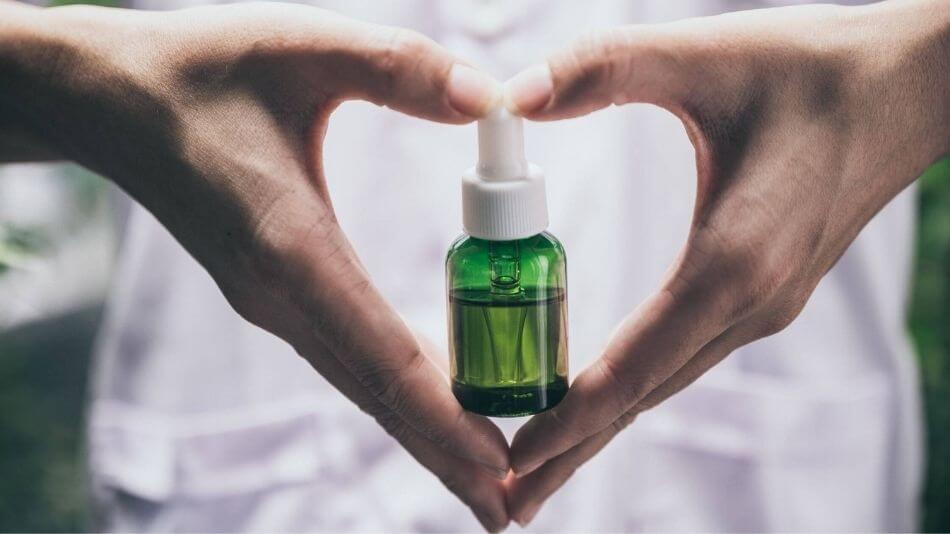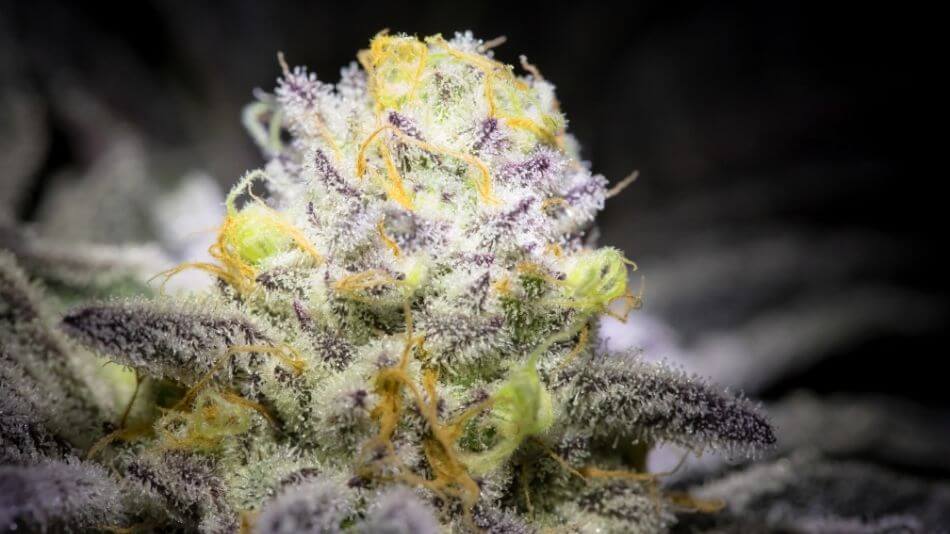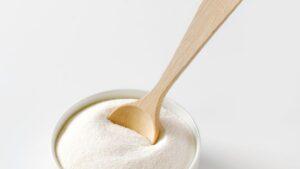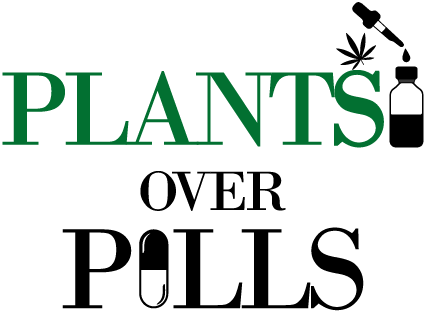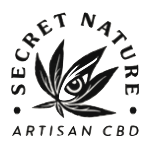Flavonoids are complex compounds that give plant life their color and contribute to taste and smell, but that’s not all these key players are capable of.
Flavonoids, especially in the context of cannabis and CBD products, are incredibly important for determining the look, smell, and taste of a substance. They’re naturally-occurring and found in all sorts of plants, but they are still often misunderstood and, as a result, understudied.
Even if we don’t know a ton about flavonoids and how they can help us just yet, we do have a pretty good understanding of what they are, where they come from, and why they exist. Using this knowledge in a strategic way makes it possible to use flavonoids as supplemental tools, and future research may mean that we can even use them like we do CBD.
What Are Flavonoids?
Flavonoids are naturally-occurring compounds found in many different plants, including the fruits and vegetables that we use and eat.
There are many types of flavonoids, only some of which are usually found in foods, and they each have different benefits and interact with the body differently.
These powerful compounds are often touted for their health benefits, but they also provide the color and contribute to the taste of many of the fruits we know and love.
Their antioxidant properties make them great tools for managing your health, especially in combination with other supplements or natural treatment options.
Where Do Flavonoids Come From?
Plants naturally produce flavonoids for a variety of reasons. One of the biggest practical benefits of flavonoids is the color they produce; bright, vivid colors on flowers or fruits can attract pollinating insects that keep the plant alive and help create future generations.
Flavonoids can also help plants by acting as chemical messengers and supporting key functions like UV filtration.
When we harvest plants, either for oral consumption or to be made into other products, we also harvest their flavonoids, which can be just as beneficial for our bodies as they are for their sources!
Are Flavonoids Antioxidants?
Flavonoids are high in antioxidant activity, which means they have the potential to act as either mild or strong antioxidants (or somewhere in between).
An antioxidant is simply a compound that inhibits oxidation. Oxidation, when it occurs in the body, can damage cells and produce finicky free radicals that may cause further harm.
While not all flavonoids act as antioxidants or to the same extent, to many, their ability to limit or halt oxidation is one of their main benefits.
What Are Examples of Flavonoids?
There are 12 major subclasses of flavonoids out there, but only six types of common dietary flavonoids (flavonoids you can find in foods), including:
- Flavonols: known for their strong antioxidant properties and commonly found in kale, onions, grapes and red wine, fruits, broccoli, tomatoes, and more.
- Flavones: these flavonoids provide the pigment for blue and white flowering plants, but also are commonly sourced from things like peppermint and chamomile. They also have the ability to function as natural pesticides and protect the plants they’re a part of.
- Flavanones: a staple in citrusy foods like oranges, grapefruits, and lemons, these compounds are great for fighting and managing inflammation.
- Isoflavones: this flavonoid class usually comes from soy or bean products and is believed to be an important part of keeping hormones regulated in the body.
- Anthocyanidins: with the ability to create red, blue, and purple pigment in plants, it comes as no surprise that this flavonoid is most commonly located in berries and red wine.
- Flavan-3-ols: found in teas (black, oolong, green, etc.), berries, and chocolate products, these compounds are thought to be rich in nutrients that keep the body in tip-top shape.
How Do Flavonoids Work?
Flavonoids have the unique ability to combat all sorts of bodily stressors, including inflammation, viruses, and even allergens with their natural properties.
The molecules that make up a flavonoid can interact with those found in the body, making it possible for the former to slow, halt, or jumpstart bodily processes.
A flavonoid with strong antioxidant properties, for instance, may enter the body and slow the production of free radicals or other chemical waste.
What Do Flavonoids Do?
In simple terms, flavonoids help your body perform at its best and fight off obstacles that might make it hard to do so.
There’s a lot of potential in terms of what flavonoids can do for our mental and physical health, but more research is needed before we can fully understand how we can use these natural miracle workers to our advantage.
Some research, for instance, suggests that flavonoids may have cardiovascular benefits; this finding would support the notion that a glass of red wine a day can be good for the heart or that certain foods may lower blood pressure.
With more solid inquiry into these areas, we may be able to determine how to practically and consistently use flavonoids as a natural therapeutic option.
For now, we can say with certainty that flavonoids anecdotally help with many of the same things CBD does; more on this later.
What Are Flavonoids Good For?
Flavonoids are great for ridding the body of toxins, promoting good cell health, and supplying the body with nutrients and support that it might not receive otherwise.
More official research is needed before we can officially say flavonoids are good for things like cancer, allergies, and other chronic health issues, but preliminary studies and anecdotal evidence suggest that these benefits are also prominent.
Even if you don’t deliberately use flavonoids to boost your overall health, they’re still a vital part of the foods we eat and even the CBD we use; without flavonoids, the plant life of our world would not be the same.
Flavonoid Benefits
For many, the main benefit of flavonoids is the supplemental support they can provide to the body. Put in simpler terms, flavonoids make it much easier for the body to do what it needs to do to keep you healthy and happy.
This can look different from person to person and depend on the flavonoid in question.
Some studies suggest that flavonoids might be able to affect cardiovascular health and halt undesirable or harmful bodily processes; one 2011 study shows flavonoids may even slow the multiplication of cancer cells.
Overall, though, you can expect flavonoids to support regular cell growth and health.
What Are the Side Effects of Flavonoids?
There aren’t many confirmed and consistent side effects associated with flavonoids as of right now, but that doesn’t mean they don’t or can’t exist. It simply means more research into this area is needed before we can make definite claims either way.
Immediate side effects seem to be far and few between, but it’s possible that using flavonoids supplementally (taking them deliberately as supplements rather than just consuming them through food) may cause things like nausea or indigestion.
What’s more concerning, potentially, are the invisible or long-term effects of too many flavonoids in the body.
While it’s hard to say now what these effects may look like, we do know that it’s likely best to stick to a few servings of flavonoid-heavy food or drink a day.
Are Flavonoids Safe?
As far as we know for now, flavonoids are safe to consume both naturally and artificially, but it’s never a bad idea to check with a doctor before making any changes to your supplement routine, especially if you take prescription medications.
While flavonoids may not be known to cause side effects on their own, they may be able to interact with other compounds in the body and, as a result, lead to unpleasant consequences.
A 2004 study on the potential toxicity of flavonoids and other similar compounds notes that flavonoids do have the potential to interact with some medications.
When these interactions occur, the result can be very harmful to the body.
No need to panic, though – if you take prescription medication, you can still safely enjoy the foods that contain flavonoids. What may be problematic is going out of your way to consume more of these foods or to consume isolated flavonoids as a supplement.
Like all good things in life, too many flavonoids can pose a problem. But in general, these compounds are very safe; you don’t need to worry about serious changes to your health.
Can You Overdose On Flavonoids?
There isn’t necessarily a way to “overdose” on flavonoids, at least not in the way we typically use and understand the word “overdose.”
To overdose usually means to consume too much of a substance, often to the point of bodily harm or even death; as a result, what constitutes an overdose looks very different from person to person.
It is possible to take too many flavonoids, mostly in the sense that your body may not be able to use them or reap much benefit. It’s also possible that an excess of flavonoids can react negatively with other compounds in the body.
But if you do find yourself with more flavonoids in your body than you need or want, you shouldn’t have much more to worry about than some temporary discomfort.
Are Flavonoids Psychoactive?
Compounds like flavonoids are not considered psychoactive because they do not create an impairing “high” that impacts things like coordination, memory, and other mental functions.
Even though flavonoids can interact with the body and create changes, they’re not psychoactive.
Which Foods Are Rich In Flavonoids?
Nearly all foods have some level of flavonoid in them, but those that have the most tend to be the easiest to spot. In general, the more colorful and vivid a food is in appearance, the more flavonoids it has.
That means foods like fruits and vegetables are some of the best sources for flavonoids of all types. Other great options are fruit juices and products made from fruit, flowering plants, and even herbs.
Below are some examples of foods that are rich in flavonoids, more so than other options out there:
- Berries
- Citrus fruits
- Soybeans
- Chocolate, especially dark chocolates
- Teas
- Onions
How Many Flavonoids Are Found In Cannabis?
Around 20 or so flavonoids have been found in cannabis already, though research into this area always is and has the potential to further discover more.
The flavonoids found in cannabis, including both marijuana and hemp, are key players in terms of the smell, taste, and overall experience associated with these plants.
Do Flavonoids Affect Taste?
Many flavonoids can and do affect the way plants and their byproducts taste.
Even if they don’t strongly impact flavor profile, their contribution to a plant’s scent impacts the experience it creates upon consumption.
Smell and taste are closely linked, at least for us humans, so the odor something produces can influence how good (or bad!) something tastes to us.
Terpenes vs. Flavonoids
While both terpenes and flavonoids serve the purpose of creating a unique taste and scent profile for cannabis, they aren’t interchangeable on a molecular nor practical level.
You can think of terpenes and flavonoids as two types of compounds with different backgrounds who come together to perform similar tasks. Though they may work best together, it’s important to understand their different roles.
Both are active compounds, meaning they have the ability to interact with other molecules in a product or in your body.
But terpenes are primarily responsible for scent and flavor profile while flavonoids contribute more to appearance and have additional, separate effects.
Like all things related to cannabis, the two work best together. The entourage effect suggests that combining multiple parts of the cannabis plant creates a more well-rounded, longer-lasting, and stronger experience for the user.
So, the presence of both flavonoids and terpenes in any given strain means that the results of consuming said product will be much more worthwhile.
To take advantage of this phenomenon and all flavonoids have to offer in general, be sure you shop for products that are either broad- or full-spectrum rather than something like a CBD isolate.
Both broad-spectrum and full-spectrum cannabis products contain flavonoids and terpenes. If you’re looking to maximize the benefits you can reap from your product, opt for those that have the highest amount of these compounds as possible.
For product ideas and recommendations, check out our directory, which is both free to use and highly informational. Making the right choice for your needs has never been easier!
Does CBD Contain Flavonoids?
CBD hemp flower does indeed contain flavonoids, as do many of the products made using it. Flavonoids like cannaflavin A, B, and C, among others, are commonly found in these plants and can be used to further enhance the therapeutic effects of CBD itself.
It is important to note, though, that CBD itself is a cannabinoid, which is another type of compound. Cannabinoids are the “active” components of a cannabis plant that work with the body’s endocannabinoid system to affect things like mood, energy, immune responses, and more.
CBD as a cannabinoid may not contain flavonoids, but the plants it’s found in certainly can and do.
Final Thoughts
Flavonoids are certainly underrepresented and underappreciated considering the breadth of their benefits and potential. But, with this information at your side, you can begin to fully take advantage of all they have to offer.
You’ve likely been benefiting from these compounds without even knowing it.
After all, they are a fundamental part of the plants we love and depend on – in the context of cannabis, though, we have a bit more control over how and when we use them.
As research into this area continues, it’s likely that we’ll discover even more uses for flavonoids and develop a much better understanding of how to use them appropriately for long-term treatment.
For now, don’t be afraid to experiment with different flavonoids in your product and see what they do for you. You might be surprised by just how much of a difference they can make.


